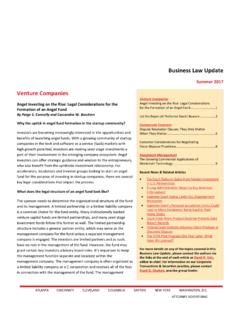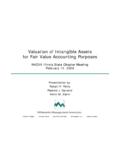Transcription of Project Finance in Theory and Practice - UNTAG
1 Project Finance in Theory and PracticeThis page intentionally left blankProject Finance in Theoryand PracticeDesigning, structuring , and financing Privateand Public ProjectsStefano GattiAMSTERDAM BOSTON HEIDELBERG LONDONNEW YORK OXFORD PARIS SAN DIEGOSAN FRANCISCO SINGAPORE SYDNEY TOKYOA cademic Press is an imprint of ElsevierAcademic Press is an imprint of Elsevier30 Corporate Drive, Suite 400, Burlington, MA 01803, USA525 B Street, Suite 1900, San Diego, California 92101-4495, USA84 Theobald s Road, London WCIX 8RR, UKThis book is printed on acid-free 2008, Elsevier Inc. All rights part of this publication may be reproduced or transmitted in any form or by any means, electronic ormechanical, including photocopy, recording, or any information storage and retrieval system, withoutpermission in writing from the may be sought directly from Elsevier s Science & Technology Rights Department in Oxford,UK: phone: (+44) 1865 843830, fax: (+44) 1865 853333, E-mail: You may alsocomplete your request on-line via the Elsevier homepage ( ), by selecting Support &Contact then Copyright and Permission and then Obtaining Permissions.
2 Library of Congress Cataloging-in-Publication DataApplication SubmittedBritish Library Cataloguing-in-Publication DataA catalogue record for this book is available from the British 13: 978-0-12-373699-4 For information on all Academic Press publicationsvisit our Web site at in the United States of America07080910 987654321 Abbreviated ContentsForeword by William L. MegginsonxiiiPrefacexviiAcknowledgmentsx ixAbout the AuthorxxiChapter 1 Introduction to the Theory and Practice of Project Finance1 Chapter 2 The Market for Project Finance : Applications and Sectors19 Chapter 3 Project Characteristics, Risk Analysis, and Risk Management 31 Chapter 4 The Role of Advisors in a Project Finance Deal63 Chapter 5 Valuing the Project and Project Cash Flow Analysis101 Chapter 6 financing the Deal147 Chapter 7 Legal Aspects of Project Finance233 Chapter 8 Credit Risk in Project Finance Transactions andthe New Basel Capital Accord289vCase StudiesCase Study 1 Cogeneration323 Case Study 2 Italy Water System331 Appendix to Case Study 2.
3 Structure and Functioning of theSimulation Model341 Case Study 3 Hong Kong Disneyland Project Loan359 Glossary and Abbreviations379 References395 Index401viABBREVIATED CONTENTSC ontentsForeword by William L. MegginsonxiiiPrefacexviiAcknowledgmentsx ixAbout the AuthorxxiChapter 1 Introduction to the Theory and Practice of Project What Is Project Finance ? Why Do Sponsors Use Project Finance ? Who Are the Sponsors of a Project Finance Deal? Industrial Sponsors in Project Finance InitiativesLinked to a Core Public Sponsors with Social Welfare Contractor/Sponsors Who Develop, Build, or Run the The Purely Financial Overview of the Features of Project The Contractor and the Turnkey ConstructionContract (TKCC) Operations and Maintenance Contractor and theO&M Purchasers and Sales Suppliers and Raw Material Supply Agreements (RMSAs) Project Finance as a Risk Management The Theory of Project Separate Incorporation and Avoidance ofContamination ConXicts of Interest Between Sponsors and Lendersand Wealth Expropriation15 Chapter 2 The Market for Project Finance .
4 Applications and Historical Evolution of Project Finance and Market The Global Project Finance A Closer Look at the European PPP Development27 Chapter 3 Project Characteristics, Risk Analysis, and Risk Identifying Project Precompletion Phase Postcompletion Phase Risks Found in Both the Pre- and Postcompletion Risk Allocation with Contracts Stipulated by the Allocation of Construction Risk: The Turnkey (or Engineering,Procurement, and Construction EPC) Allocation of Supply Risk: Put-or-Pay Allocation of Operational Risk: Operations andMaintenance (O&M) Allocation of Market Summary of the Risk Management Process61 Chapter 4 The Role of Advisors in a Project Finance The Role of Legal Advisors in Project Finance Legal Advisor, Legal Advisors, and Law Firms:The International Part and Local Legal Project financing Development Stages andImpacts on the Role of Legal The Role of the Independent Engineer in Project Finance Initial Due Diligence Monitoring Realization of the Project (Engineering and Construction) Assistance at the Time of Plant Monitoring Operations Role of Insurance Advisors and Insurance Companies inProject Finance Rationale for Using Insurance in Project Finance When Should Insurance Products Be Used?
5 Areas Where the Insurance Advisor Is Types of Conventional and Financial Insurance ProductsAvailable for Project Finance Integrated Insurance Solutions Structure and Classification of Insurance Underwriters98 Chapter 5 Valuing the Project and Project Cash Flow Analysis of Operating Cash Flows and Their Behavior inDifferent Project Life-Cycle Inputs for Calculating Cash Defining the Optimal Capital Structure for the Senior VAT Stand-by Identifying Sustainable Debt/Equity Mixes forSponsors and Cover What Cover Ratios Can Tell Us and What They Can Cover Ratios as an Application of theCertainty Equivalents Sensitivity Analysis and Scenario Which Variables Should Be Tested in Sensitivity Analysis?141 Chapter 6 financing the Advisory and Arranging Activities for Project Finance Advisory Arranging Integration of Advisory and Arranging Other Roles in Syndicated Fee Fees for Advisory Fees for Arranging Fees to Participants and the Agent Example of Fee International Financial Institutions and Multilateral Multilateral Regional Development Bilateral Agencies: Developmental Agencies andExport Credit Agencies (ECAs) Developmental Export Credit Agencies (ECAs) Other Financial Intermediaries Involved in Project Funding Options: Timing of the Equity Contribution and Stand-by Equityand Equity Can Shares in an SPV Be Listed on a Stock Exchange?
6 Funding Options: Mezzanine financing and Subordinated Funding Options: Senior The Base Working Capital Stand-by VAT Loan Loan Repayment Refinancing Loans Already Granted to the Project Valuing the Convenience of a Project The Tax Project Investors in Project Various Categories of Project Municipal When Should Project Bonds Be Used? Procedure for Issuing Project Bonds224 Chapter 7 Legal Aspects of Project The Project Reasons for Incorporating the Project in a Project Company The Project Company as a Joint Venture:Another Reason to Develop a Project in an The Project Company and Groups of Corporate Documentation: Articles of Outsourcing the Corporate Functions of the Project Company:How the Company/ Project Is Actually The Contract Before the financing : The Due Diligence Report and theTerm ClassiWcation of Project The Credit Security Documents.
7 Security Interests and What They Other Finance Project Refinancing Project Finance Deals285 Chapter 8 Credit Risk in Project Finance Transactions and theNew Basel Capital The Basel Committee s Position on Structured Finance Transactions(Specialized Lending, SL) Classes of Transactions Included in Specialized Rating Criteria for Specialized Lending and Their Application toProject Financial Political and Legal Transaction Strength of Mitigants and Security Summary of Grading Rating Grade Slotting Criteria of the Basel Committee andRating Agency The Basel Accord: Open EVects of the Basel Proposal on the SyndicatedProject Finance Loan Introduction to the Concepts of Expected Loss, Unexpected Loss,and Value at Defining Default for Project Finance Modeling the Project Cash DeWning a Risk Assessment Identifying Project Variables and Key Input Variables: Estimation and Data Estimating Project Cash Flow and Valuing Estimating Value at Risk through Defining Project Value in the Event of Deterministic vs.
8 Stochastic LGD LGD Drivers: The Value of Underlying Assets Project Cash Restructuring vs. Default321 Case Studies323 Case Study 1 Production Sponsors of the Agreements Underpinning the Financial Conclusion: In Arrigoni s Office329 Case Study 2 Italy Water Business Plan of the Capital Financial Requirement and Sources of Operational Economic and Financial Ratios339 Appendix to Case Study 2: Structure and Functioning of theSimulation Breakdown of the Financial Model342 Case Study 3 Hong Kong Disneyland Project Background on Syndicated Bank The Hong Kong Disneyland Project Designing a Syndication Executing the Syndication Conclusion377 Glossary and Abbreviations379 References395 Index401xiiCONTENTSF orewordWilliam L. MegginsonThis is a timely book examining an extremely timely topic. During the past threedecades, Project Finance has emerged as an important method of financing large-scale, high-risk domestic and international business ventures.
9 This is usually definedas limited or nonrecourse financing of a new Project to be developed through theestablishment of a vehicle company (separate incorporation). Thus the distinguishingfeatures of Project Finance (PF) are, first, that creditors share much of the venture sbusiness risk and, second, that funding is obtained strictly for the Project itselfwithout an expectation that the corporate or government sponsor will coinsure theproject s debt at least not fully. PF is most commonly used for capital-intensiveprojects, with relatively transparent cash flows, in riskier-than-average countries,using relatively long-term financing , and employing far more detailed loan covenantsthan will conventionally financed projects. (Stefano Gatti and his collaborators havewritten an excellent and comprehensive survey of Project Finance techniques, pro-cesses, and practices , which practitioners and researchers should both value as a keyresource.)
10 Project Finance has grown very rapidly in the recent past. Esty and Sesia (2007)report that a record $328 billion in PF funding was arranged in 2006, up from $165billion in 2003 and substantially above the previous record $217 billion in 2001. A keyreason why Project Finance has emerged so spectacularly recently is that the worldeconomy is now growing at very nearly its fastest pace ever. Since 2003, global GDPhas grown at a compound annual growth rate of almost 5%, with growth in devel-oping countries approaching 7% on average. Rapid growth demands even greater-than-average investment in infrastructure, such as ports, bridges, roads, telecommu-nications networks, electric power generation and distribution facilities, airports,intra- and intercity rail networks, and water and sewerage facilities. The OECD predicts that the world will need to spend almost 4% of national and global GDPon infrastructure each year to support accelerating growth around $ trillionannually yet governments are ill-placed to fund more than a fraction of theseinvestments.













